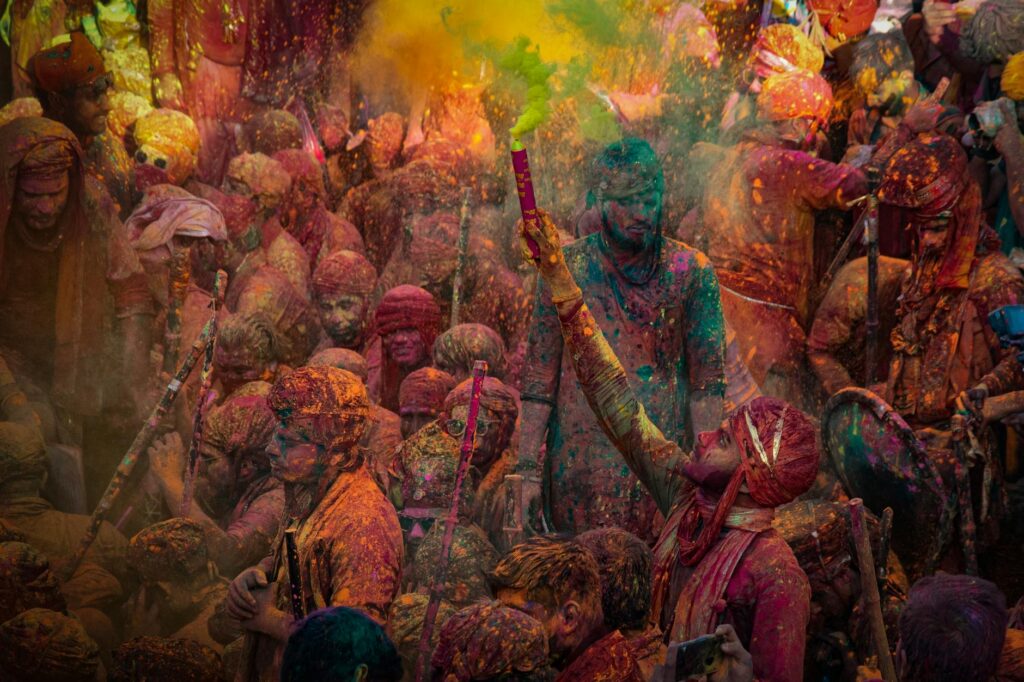Who the Heck is Swami Sarang at Lucknow’s Muharram Procession?
You know how Lucknow always surprises you? Well, this year’s Muharram procession had everyone talking—and for good reason. Picture this: thousands of Shia Muslims walking in solemn remembrance, chests pounding in matam… and right there beside Maulana Kalbe Jawwad stands a Hindu swami. No, really. Swami Sarang, whoever he is, showed up unannounced, paid respects to Imam Hussain, and suddenly became the face of something rare these days—actual unity. Let me break down why this tiny moment matters way more than you’d think.
1. Okay, But What’s Muharram Actually About?
1.1 The Basics
Muharram’s the first month in Islam’s calendar, but for Shias? It’s raw grief. They’re mourning Imam Hussain—Prophet Muhammad’s grandson—who got martyred in Karbala back in 680 AD. Think of it like… if your family’s biggest tragedy became an annual moment to reflect and reconnect spiritually.
1.2 Karbala Wasn’t Just a Battle
Here’s the thing—Imam Hussain had maybe 72 guys against an army. No water for days in the desert. Could’ve sworn loyalty to Yazid (total dictator, by the way) and lived comfortably. But nope. Chose principles over survival. That’s why Karbala’s shorthand for “standing up when it counts.”
1.3 How Lucknow Does It Differently
Processions here aren’t just sad walks. They’re full-on sensory experiences—poetry recitals that make you tear up, synchronized chest-beating that rattles your bones. And somehow, Hindus have always hovered at the edges, watching respectfully. But joining in? That’s new.
2. Why Swami Sarang Showing Up Changes Things
2.1 Lucknow’s Route Through History
The procession path—from Imambara Nazim Sahib to Karbala Talkatora—is basically a 3D history book. This city’s got Ganga-Jamuni Tehzeeb in its DNA. Muslims borrowing Hindu architectural styles, Hindus attending Sufi shrines… you get the picture.
2.2 The Swami Nobody Saw Coming
Honestly? Nobody’s got the full scoop on Swami Sarang. Dude materialized like a plot twist. But his simple act—standing shoulder-to-shoulder during Ashura—said more than any speech: “Your pain is mine too.”
2.3 Why It Pisses Off the Wrong People
Let’s be real—some folks hate this stuff. When a saffron-robed swami mourns with Shias, it breaks their “us vs them” narrative. Good. Maybe we need more uncomfortable moments.
3. The Unspoken Rules This Broke
3.1 Lucknow’s Open Secret
We pretend communal harmony needs effort, but here’s the truth—old Lucknow families have quietly shared spaces forever. My Hindu friend’s grandma would send iftar plates to Muslim neighbors. Normal stuff, until politics made it “revolutionary.”
3.2 The Backlash That Barely Mattered
Sure, some trolls called it “appropriation.” But when heavyweight clerics like Maulana Jawwad embrace the gesture, keyboard warriors look ridiculous.
3.3 Grief as the Ultimate Equalizer
Here’s what gets me—when someone dies, nobody asks “Which god did they pray to?” before crying. Swami Sarang tapped into that human truth. Simple, yet somehow radical in 2024.
4. What This Means for the Rest of Us
4.1 We’re Starved for These Stories
Media amplifies riots but ignores the Hindu guy who’s been organizing Muharram water stalls for 20 years. More Swami Sarangs = less oxygen for hate.
4.2 The Catch Nobody Talks About
These moments flourish despite politicians, not because of them. Real change happens when regular people stop waiting for permission to be decent.
5. Final Thought
Swami Sarang probably didn’t plan to become a symbol. But in a country where religious identity gets weaponized daily, his unscripted act felt like finding an oasis. Here’s hoping it’s contagious.
FAQs (Because Someone’s Gonna Ask)
Seriously, who is this swami?
Your guess is as good as mine. Mysterious holy man shows up, drops a masterclass in humanity, vanishes. Classic Lucknow magic.
Why do Shias beat their chests?
Same reason you punch a wall when grieving—except codified over centuries. Physical pain to mirror the heart’s ache.
Has this ever happened before?
Old-timers whisper about similar things pre-Independence. But today? It’s like spotting a unicorn.
What’s Karbala’s relevance today?
Ever seen regular people stand up to dictators? That’s Karbala’s legacy. Timeless as oppression itself.
Source: Navbharat Times – Default

